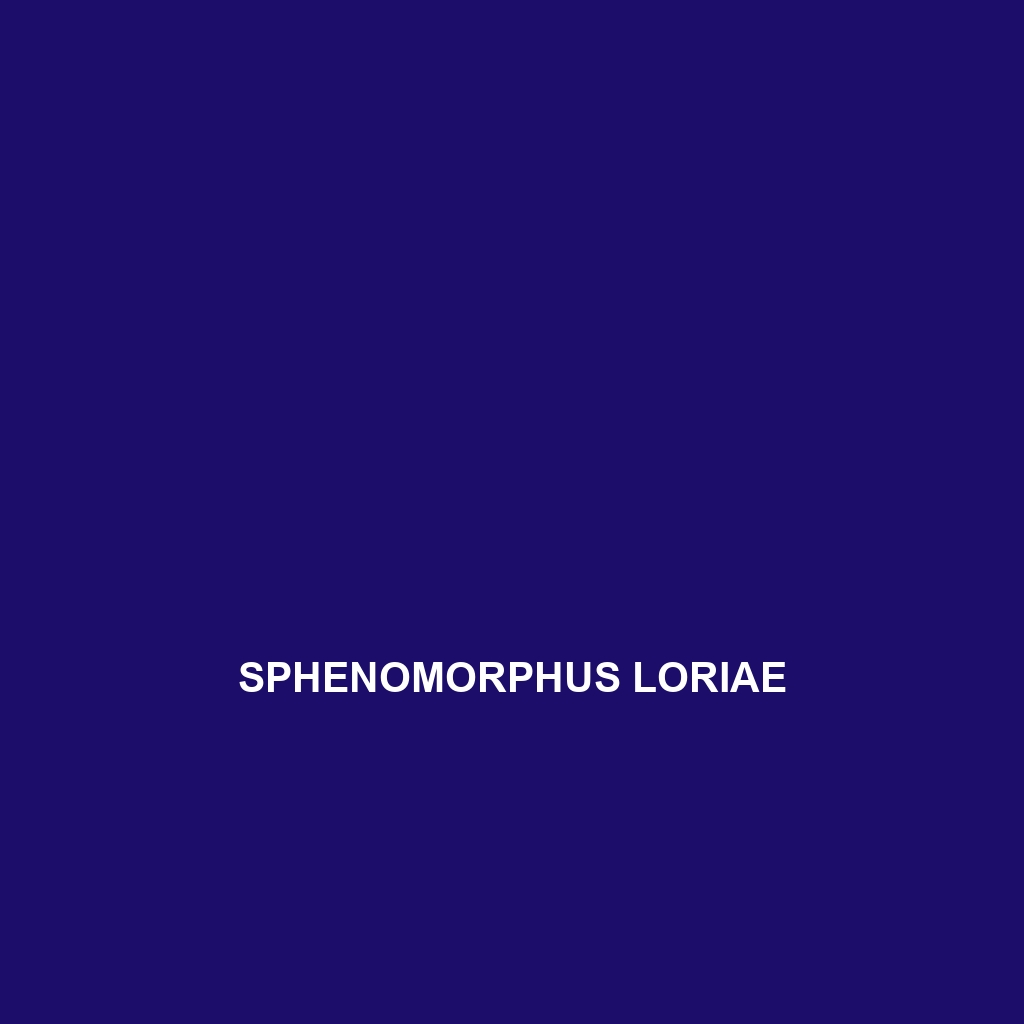Common Name
Sphenomorphus loriae
Scientific Name
Sphenomorphus loriae
Habitat
Sphenomorphus loriae is primarily found in the lush rainforests of Papua New Guinea and Indonesia. This species thrives in humid, tropical climates where the average temperature ranges from 25°C to 30°C. It prefers environments rich in vegetation, often residing near water bodies like streams and rivers that traverse the forest floor. The dense canopies provide shade and shelter, while the surrounding leaf litter offers ample opportunities for foraging. Additionally, Sphenomorphus loriae is also observed in adjacent habitats such as savannas, showcasing its adaptability to varied ecosystems, although it remains most abundant in rainforest settings.
Physical Characteristics
Sphenomorphus loriae is characterized by its moderate size, typically reaching lengths of 20 to 30 centimeters. This species exhibits a slender and elongated body that is ideal for navigation through thick underbrush. Its skin displays a vibrant coloration, often featuring shades of green and brown, which serve as camouflage against the forest floor. Unique to this species are the smooth scales and a slightly flattened head, which contribute to its streamlined appearance. Some individuals may have distinct markings or patterns that enhance their visibility within their habitat.
Behavior
The behavior of Sphenomorphus loriae is predominantly diurnal, meaning it is most active during daylight hours. This species exhibits a solitary lifestyle, although individuals may congregate in areas rich in food sources. Notably, Sphenomorphus loriae has been observed engaging in unique mating rituals, which include elaborate displays of body movement and territorial calls. During the rainy season, these lizards can be seen pursuing potential mates and defending their territories vigorously. Furthermore, their adaptability in behavioral patterns allows them to forage effectively, making use of both ground and arboreal resources.
Diet
Sphenomorphus loriae is an insectivore, primarily feeding on a diet consisting of insects such as beetles, ants, and termites. These lizards are adept at hunting, utilizing their quick reflexes and keen eyesight to capture prey. They may also consume small arthropods, contributing to their crucial role in controlling insect populations in their ecosystems. The dietary habits of Sphenomorphus loriae reflect its niche in the food web, showcasing its dependency on abundant insect populations, especially within the vibrant rainforest; this makes them sensitive to changes in environmental conditions.
Reproduction
The reproductive cycle of Sphenomorphus loriae typically occurs during the warmer months when temperatures are optimal for breeding. The mating season coincides with increased rainfall, which provides suitable conditions for the development of eggs. Females usually lay between 2 to 5 eggs per clutch in moist, sheltered locations within the leaf litter. The incubation period lasts approximately 30 to 60 days, depending on environmental factors such as temperature and humidity. Upon hatching, the juvenile lizards are independent and start foraging for food immediately, reflecting a low investment in parental care beyond the initial egg-laying phase.
Conservation Status
The conservation status of Sphenomorphus loriae has not been extensively studied, but its habitat is increasingly threatened by deforestation and habitat destruction. Environmental changes pose significant risks, potentially categorizing this species as ‘vulnerable’. Conservation efforts are essential to protect their rainforest habitats, and initiatives focusing on sustainable land use are crucial in safeguarding their populations. Researchers continue to monitor this species, emphasizing the need for awareness and action regarding its ecological significance and the challenges it faces.
Interesting Facts
One fascinating aspect of Sphenomorphus loriae is its ability to rapidly change color based on its environment and mood, aiding in camouflage and communication with other lizards. This unique adaptation makes them particularly interesting to herpetologists studying color change mechanisms in reptiles. Additionally, these lizards are known to have remarkable climbing abilities, allowing them to escape predators and navigate their arboreal surroundings effectively.
